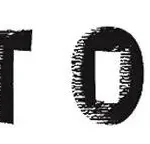One of the most recognizable images on a fire scene is that of a firefighter’s helmet. Helmets can come in a variety of styles, but all serve the same purpose – to protect the firefighter’s most valuable part of his or her body.
But helmets also serve another purpose in the fire service. On the front of each helmet, you can normally find a firefighter’s “leather,” a leather piece displaying the firefighter’s department and rank. This letter, coupled with the various colors of the helmet, can help to identify who is charged with what task on a fire scene.
One of the most challenging aspects of the helmet denoting of ranks is that there is no universally standard system for helmet coloring, therefore departments are free to designate helmet colors to whatever corresponding ranks they chose. However, most companies in Cape May County do have similar colorings, for the most part.
The only universally accepted helmet coloring in the United States, it seems, is that of white. A white helmet always designates the chief of department. This individual is responsible for the main leadership of the department – the day-to-day operations, oversight of firefighters and equipment, and command of incidents during an emergency. The man in charge always where a white helmet.
Likewise, Assistant, Battalion, or Deputy Chiefs also usually wears a white helmet. These individuals have many of the same tasks as the chief of department, acting as the commanding officer when the chief is not present. Also, many chiefs chose to delegate some of their duties and authority to their under-chiefs. These chiefs are usually second-in-command of their departments.
After the chiefs, the helmet coloring starts to become blurred. Next in line fall captains. A captain normally designates an individual who often assumes initial command of an incident, or is delegated by the chief to oversee a specific part of emergency response. Captains often delegate their authority to lieutenants, who oversee that the delegated task is carried out. Captains, especially senior ones, aren’t directly involved with the interior firefighting in most departments. They organize and direct crews from the exterior.
Captains are scene in a variation of colors. Some departments chose to have captains wear white helmets along with the Chiefs and under-chiefs, designating their rank by the use of leathers on the front. Other departments have captains and lieutenants wearing the same color helmets, designating their rank by different color leather.
Lieutenants, a normally “senior” firefighters, and are usually involved with controlling one or two crews at the scene of an emergency. They answer to the upper command officers, and directly oversee the actions of the members of their crews. In the volunteer side, they are often assigned a specific piece of apparatus to oversee.
Again, these officers can be delegated some of the higher officers’ authority and tasks, and can also assume initial command of an incident. Many departments use either red or yellow to designate lieutenants in our area, but some choose to use the same color helmet as their firefighters wear, designating the higher rank with a differing leather.
Some area departments also designate Engineers, individuals who are charge with driving and/or operating a piece of apparatus at the scene of an incident. Engineers normally share the same helmet color with firefighters, but have leathers signifying their positions. Similarly, many departments who designate engineers designate them to firefighters who are no longer qualified to enter a building. These engineers will often wear a different variation of helmet style from those who can enter.
Firefighters are the most plentiful rank in many departments. They are subject to the orders of the department’s officers, and are the ones directly involved in the proactive side of the emergency incident. Rarely are firefighters subject to assume command of an incident, but many departments have “senior firefighters” who would be qualified to do so if need be.
Most departments use black helmets to designate firefighters, but there are several departments who also use yellow or red helmets.
Additionally, many departments designate between their firefighters and “probationary” firefighters. A probationary firefighter is one who has not undergone the required New Jersey State Firefighter I program, but is over the age of the junior firefighter status. Normally, departments allow these individuals to wear the same colored helmet as firefighters, but different color leather, most commonly orange, to designate probationary status.
Finally, junior firefighters are those firefighters who are under the age of 18 in the department. The entry age for these firefighters varies, and can be as low as 14 in some departments. Junior firefighters are limited to the types of tasks they can undergo on the fire scene, such as the prohibiting of interior firefighter. These firefighters usually wear yellow helmets, but often wear black helmets in departments that don’t use black to signify firefighters.
As you can see, using helmet colors to signify rank is a difficult concept when there is no universal rule. Fire departments must be familiar with their surrounding companies’ helmet designations to better interact on mutual aid incidents.
Some areas in the country have noticed the problem and stepped in. For example, Lancaster County, Pa. noticed the confusion caused on large-scale incidents by the differing helmet colors in 2007, and mandated a system that saw every department in the county to switch coloring to determined ranks.
A universal system would greatly aid the fire departments of Cape May County, but is normally seen as infeasible due to the costs it would incur on departments. So until a switch is made, enjoy the color potpourri on emergency scenes.
Knoll, 19, of Eldora, can be contacted by email at bknolljr4cmcherald@ yahoo.com. He is a student at Rowan University.
.







